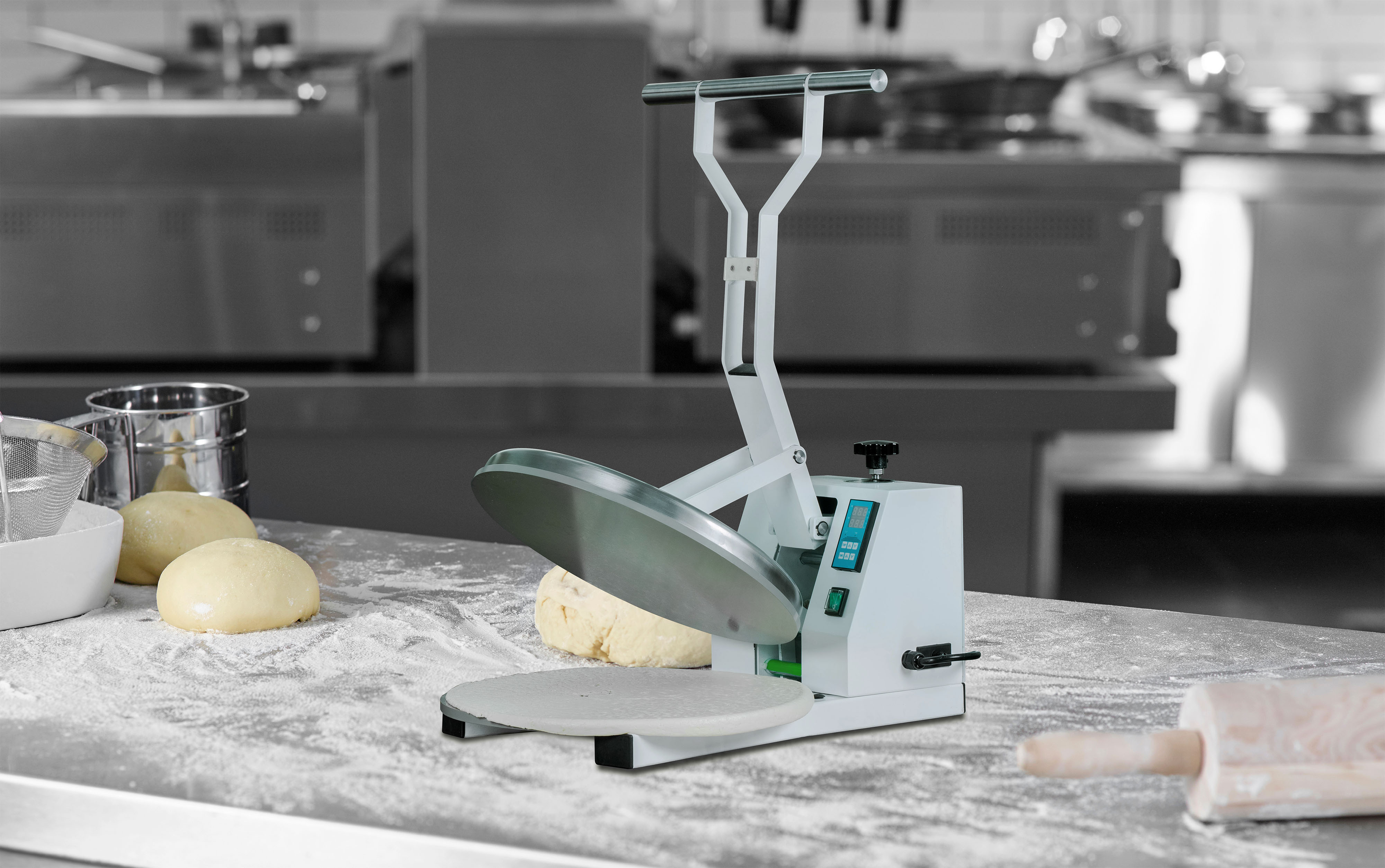
Maintenance and Cleaning Procedures
Maintaining and cleaning a pizza dough press machine is essential to ensure its optimal performance and longevity. Daily maintenance involves wiping down the hard surfaces of the machine using a clean, damp cloth to prevent debris buildup and maintain hygiene. It is also important to inspect the machine for any visible signs of damage or wear, such as loose belts or chains, and address them promptly. Regularly checking and tightening any loose screws or connections ensures the stability and safety of the machine.
Thorough cleaning of the dough press machine should be done regularly to remove any dough or residue that may accumulate. This involves setting up a protocol to completely break down the machine for thorough cleaning, including disassembling removable parts. Large parts, such as plates and trays, should be soaked in hot, soapy water to loosen and remove any dough or residue. All parts should be scrubbed with a soft brush or sponge to ensure thorough cleaning, paying special attention to hard-to-reach areas. Rinse all parts with clean water and allow them to air-dry on a well-aerated surface before reassembling the machine.
Sanitization is another important step in maintaining a hygienic dough press machine. Food-safe sanitizing agents recommended by the manufacturer should be used to effectively eliminate bacteria. After each use, all surfaces of the machine should be wiped down with a sanitizer-soaked cloth. Areas that come into direct contact with the dough, such as the pressing plates, should be thoroughly sanitized.
Troubleshooting Common Issues
Like any machine, pizza dough press machines can experience common issues that may affect their performance. One common issue is squeaking or unusual noises. This can be caused by loose screws or components, which can be tightened if necessary. Lubricating the moving parts, such as bearings or gears, can also help reduce friction and eliminate squeaking. If the issue persists, it is recommended to consult the manufacturer's manual or contact a service agent for further assistance.
Another common issue is torn or stretched dough. To prevent this issue, it is important to ensure that the pressing plates are clean and free from any debris or residue that could cause tearing or stretching of the dough. Adjusting the pressure settings of the dough press machine can also help avoid excessive force that can lead to dough tearing. If the issue continues, it may be necessary to replace the pressing plates or consult a service agent for professional evaluation.
Malfunctioning belts or chains are also a common issue with dough press machines. It is important to check for any signs of wear or damage on the belts or chains, such as cracks or fraying. Worn or damaged belts or chains should be replaced following the manufacturer's recommendations. Regularly cleaning and lubricating the belts or chains can also help ensure smooth operation and prevent potential malfunctions.
Best Practices for Extending Lifespan
To extend the lifespan of a pizza dough press machine, there are several best practices that operators should follow. Regular maintenance and cleaning according to the recommended procedures is crucial to prevent debris buildup and premature wear. Operators should also follow the manufacturer's guidelines for usage, including weight and thickness limits, to avoid overloading the machine and causing unnecessary stress.
Proper training of operators on machine operation and maintenance is essential to ensure they understand how to use and care for the dough press machine correctly. Keeping a record of maintenance and cleaning schedules can help ensure regular and timely attention to the machine's needs. Additionally, scheduling professional maintenance inspections can help identify and address any potential issues before they escalate.
Conclusion
Regular maintenance, cleaning, and care are crucial for pizza dough press machines to ensure optimal performance and longevity. Daily maintenance, thorough cleaning, sanitization, and lubrication are key procedures that should be followed. Troubleshooting common issues promptly and seeking professional assistance when needed is important to keep the machine in good working condition. By implementing best practices and following the manufacturer's guidelines, operators can extend the lifespan of their dough press machines and maximize their investment.


Comments